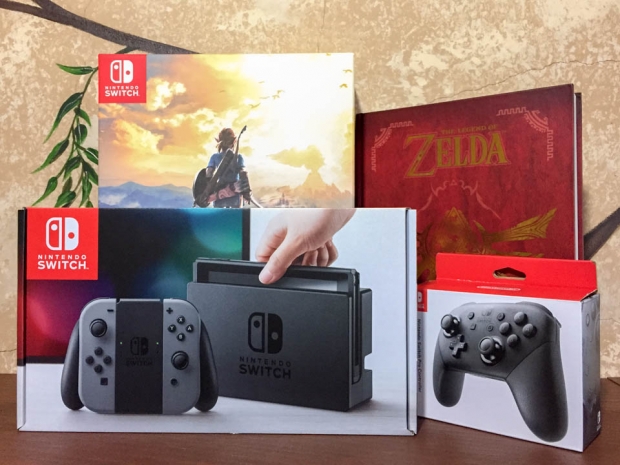Index
Nintendo DS sticks around while flexible motion controls are in
Earlier this month, Nintendo introduced one of the most groundbreaking product designs it has put together since the Wii was released back in 2006. With a lightweight and fairly modern build quality, flexible controller options and a design reflective of a rather creative, non-OEM Shield tablet, the company has managed to outsell its competitors and rethink the boundaries of home and portable gaming.
History: Taking integrative design elements from the Wii
During E3 2004, Nintendo was at a design intersection on how to reinvent the modern home gaming platform to better suit an increasingly Internet-connected world while remaining relevant in the console market. The solution was to release a system not only with online service features, but also with an untethered controller design allowing users to get up off the couch and physically interact with their immediate room environments. The company released the Wii in November 2006 as a precursor to modern living room motion controller setups, allowing gamers the flexibility to switch from a couch gameplay setup to full immersion with the display through the use of expressive arm and limb movements.
Although many critics would argue that the Wii did not live up to its “Revolution” codename because of awkward motion controls and its tendency to attract “too many” casual gamers, others viewed its signature Wii Remote and Nunchuck as an innovative motion-based control scheme that immensely lowered the learning curve. The Wii Remote, a fusion between a NES controller and a television remote control, was also regarded as a “clever step” compared to using a traditional remote control that required learning not only how to control characters on screen, but how to control the controller itself.
After ten years on the market, the Wii became the best-selling home console of its respective generation of hardware, outpacing the Xbox 360 and PS3 despite Microsoft’s nearly one-year lead, though not quite winning the “living room” war on its own. Most gamers still insisted the Wii was too casual of a console and did not integrate well enough with the quality demands of emerging home theater setups during the time.
Then in 2012, the company introduced a successor in the form of the Wii U, complete with its own gamepad allowing for asymmetric gameplay, additional access to menus, and easy access to inventory. The gamepad was criticized, however, for being too bulky, containing L and R buttons slightly out of reach, and not ideally compact enough for holding comfortably during extended periods of time. In addition, some users criticized the lack of battery life and ability to have extended mobile gaming sessions.
Nintendo Switch announced as first “truly hybrid” Nintendo console
Nintendo took the criticisms seriously over the remaining lifespan of its latest asymmetric gamepad living room console and by October 2016, it was ready to announce the fruits of it labor in the form of a completely refreshed unit extended into two individual market segments. The Nintendo Switch appeared during a press conference in Japan as a representation of years of industry efforts to merge the entertainment value of room-based motion controllers with the appeal of a more streamlined gamepad for extended gameplay navigation and remote access. Not only did it simplify the design of the Wii U for the home gaming market, but it now traverses into the mobile category by offering untethered entertainment as a standalone replacement for the Nintendo DS series, the global smartphone market, and competing devices such as the Nvidia Shield Tablet (Kepler) and PlayStation Vita.




